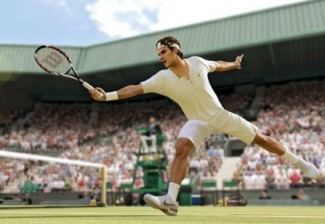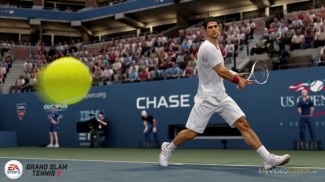Grapple Dog
LQ: 9.0
Recommended Age: 5+
Skills Used: Self-Awareness, Working Memory, Reading

In Grand Slam Tennis 2 players can take control of their favorite tennis player and compete on courts around the world. Players choose to play either singles or doubles matches and are able to enter tournaments like the US Open and Wimbledon. Career mode is also available, allowing the player to work his way to the top, and in ESPN Grand Slam Classics mode players get the chance to replay historic matches. The PlayStation Move peripheral can also be used on PS3, allowing players to issue motion control to return balls and score points with realistic arm movements. This game is recommended for kids ages 8 and up, as there is no violence in the game, little reading and the controls are easy to learn.
Understanding our own actions, thoughts and feelings.
 In Grand Slam Tennis 2, each time the ball is hit, a written word will appear telling players if their swing was "too late," "too early," or "good." If the player earns a "good" rating, the ball travels faster, leaving the opponent with less time to react. Players will need to realize their own tendencies and work to improve their performance. By becoming aware of their play style, they can work to correct their swings and return more "good" balls, rather than swinging too late or too early. If players fail to amend their performance they will have a hard time scoring, as skilled opponents will know how to react to sloppy serves and returns.
In Grand Slam Tennis 2, each time the ball is hit, a written word will appear telling players if their swing was "too late," "too early," or "good." If the player earns a "good" rating, the ball travels faster, leaving the opponent with less time to react. Players will need to realize their own tendencies and work to improve their performance. By becoming aware of their play style, they can work to correct their swings and return more "good" balls, rather than swinging too late or too early. If players fail to amend their performance they will have a hard time scoring, as skilled opponents will know how to react to sloppy serves and returns.
Getting started and then maintaining attention and effort to tasks.
The action in this game is rather fast-paced, so players must pay attention to the ball at all times, as it can be returned very quickly, especially when playing on a clay court. Players will need to remain focused on their opponent's positions, predict patterns and follow the fast moving ball, all so they they can judge where it is going to go, and how to get there in time.
Adapting and adjusting to changing conditions and expectations.
 Due to the fast pace, players must always be prepared to think on their feet, as the ball can quickly be returned anywhere on the court. Players will need to anticipate where the tennis ball is going to travel, and move to that space before the ball reaches that spot. Players are not given much time to think, so they sometimes need to abandon a set strategy, and be willing to adapt to wherever the ball goes. Also, players should stay flexible with their swings, as there are many different kinds, like backhands, forehands, lobs and power shots. If players rely too much on one type of swing, the opponent will realize this and take advantage.
Due to the fast pace, players must always be prepared to think on their feet, as the ball can quickly be returned anywhere on the court. Players will need to anticipate where the tennis ball is going to travel, and move to that space before the ball reaches that spot. Players are not given much time to think, so they sometimes need to abandon a set strategy, and be willing to adapt to wherever the ball goes. Also, players should stay flexible with their swings, as there are many different kinds, like backhands, forehands, lobs and power shots. If players rely too much on one type of swing, the opponent will realize this and take advantage.
All membership plans come with full access to our entire suite of tools learning guides, and resources. Here are a few of the ones we think you’ll like the most: